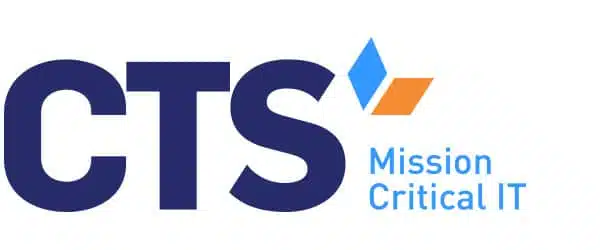Nonprofits face a growing challenge: cyber threats are no longer just a concern for large enterprises. Small organizations, especially those managing sensitive information like donor records or health-related data, are increasingly in the crosshairs. Many of these groups operate with tight budgets, lean IT teams, and approval processes that can stretch for weeks—conditions that make proactive security measures difficult.
But protecting sensitive data doesn’t always require major spending. A few focused actions can significantly reduce security risk, helping nonprofits defend against phishing scams, data breaches, and other common attacks.
These cybersecurity tips for small businesses and nonprofits are designed to fit into existing workflows, support remote work environments, and ensure your team can stay focused on your mission.
The Cyber Risks Nonprofits Face
Before implementing any solution, it’s important to understand the landscape. Cyberattacks on nonprofits are not random, they’re calculated. Cybercriminals know that nonprofits often use outdated systems and lack advanced security measures. These vulnerabilities provide easy opportunities to gain access to sensitive data.
Phishing emails remain one of the most common and successful tactics. They’re crafted to look like legitimate communications—from vendors, donors, or even internal staff—and trick users into handing over personal information or login credentials. A single click can lead to a data breach that compromises donor trust and operational stability.
Nonprofits also face risks through unmanaged devices and home networks. With more staff working remotely, secure web browsers, encrypted virtual private network (VPN) connections, and consistent software updates are no longer optional. Without them, sensitive information can be exposed through unsecured connections or outdated plugins.
The good news: you don’t need enterprise-grade tools to close most of these gaps. Many low-cost (or even free) options exist, and most improvements start with better habits and a clearer understanding of the risks.
Learn more: Why Cyber-Attacks on Nonprofit Organizations Are Growing
Tip #1: Start with Staff Awareness
Most security incidents aren’t caused by hackers exploiting sophisticated vulnerabilities; they’re the result of human error. Clicking on suspicious emails, using weak passwords, or accidentally sharing sensitive information can open the door to serious cyber threats. That’s why staff training is the most important—and most cost-effective—first step.
You don’t need a formal IT department to build awareness. There are free resources from NIST that walk through common threats like phishing scams and explain what to do when something doesn’t look right. Even a monthly five-minute refresher or sharing real-world examples of recent phishing emails can make a big difference.
Tip #2: Enforce Strong Password Habits
Weak passwords are still one of the easiest ways for attackers to gain access to systems. And using the same password across multiple accounts is practically an open invitation. Enforcing strong password policies doesn’t require expensive tools, just some structure and consistency.
Start by requiring a unique password for each platform. A strong password should consist of at least 12 characters, and combine upper- and lowercase letters, numbers, and symbols. Better yet, implement a password manager. Tools like Bitwarden or LastPass offer nonprofit discounts and make it easy for staff to store and manage their credentials securely.
Multi-factor authentication (MFA) is another simple but powerful layer of defense. Even if someone’s credentials are compromised, MFA stops unauthorized users from accessing accounts without a secondary confirmation step—usually a phone prompt or app notification. It’s easy to set up and available on most platforms your nonprofit already uses, from email systems to donor databases.
Tip #3: Prioritize Software Updates and System Maintenance
Delaying software updates might seem harmless, but outdated systems are a prime target for cyberattacks. Hackers actively look for organizations running old versions of operating systems, web browsers, or third-party plugins because known vulnerabilities can be easily exploited.
Regular updates close those gaps. That includes everything from office computers and laptops to smartphones and routers, which are especially important for remote work setups where home networks may not be properly secured. Antivirus software should also be kept current, and it’s worth checking to ensure your organization’s licenses are still active.
Establish a simple schedule. For example, designate one day each week to check for updates and patches. Assign the task to a trusted team member or volunteer if there’s no dedicated IT role. This routine alone significantly lowers your security risk and helps keep sensitive data better protected.
Tip #4: Control Access and Permissions
One of the simplest ways to reduce your exposure to cyber threats is to limit who has access to what. Not every staff member needs full administrative rights or access to all organizational files. The more people who can access sensitive information, the greater the chance something will be shared or exposed unintentionally.
Start with role-based permissions. Segment access based on job function; finance doesn’t need access to HR records, and communications staff probably don’t need server credentials. Regularly audit these permissions, especially after role changes or staff departures. A forgotten account with admin rights is a security risk just waiting to be exploited.
When volunteers or temporary staff are onboarded, set clear expiration dates for their access. These steps reinforce accountability across the organization.
Tip #5: Backup All Data
Data loss isn’t just a risk from cyberattacks. Power outages, hardware failure, and human error can all lead to lost files and downtime. Backups are your safety net, but only if they’re done correctly and tested regularly.
Start with a simple rule: your organization’s most sensitive data should be backed up regularly and stored offsite. That could mean using a nonprofit-discounted cloud storage solution, an external hard drive stored securely, or a hybrid of both. Just make sure it’s encrypted and accessible only to authorized users.
Just as important: test your recovery process. Don’t wait for a crisis to find out your backups weren’t configured properly. Run a restoration test quarterly to make sure everything works as expected.
In environments with remote work, be mindful of where files are being saved. If team members are storing data locally on home networks, that data may not be part of your backup routine. Establish a policy to ensure work is stored on shared drives or synced to your cloud system.
Tip #6: Eliminate Shadow IT
Shadow IT—when staff use unsanctioned apps or services to get work done—seems harmless at first. A quick file share here, a personal email account there. But it’s one of the fastest ways to lose control over sensitive information and increase your exposure to cyber threats.
People turn to shadow IT when official tools are confusing, slow, or unavailable. The solution isn’t to clamp down with more rules; it’s to understand why it’s happening and offer better, easier alternatives. Talk to your team about what tools they’re using and why. Then offer supported, secure options that meet those same needs.
Learn more: What is a Cybersecurity Strategy, and Why Do You Need One?
Next Steps: Implement the Right Cybersecurity Safety Tips and Solutions with Expert Help
Cybersecurity doesn’t have to be complicated or costly. With a few smart moves, nonprofits can dramatically reduce their exposure to cyber threats and protect the sensitive information they rely on. When your systems are secure, your mission is safer, your operations are steadier, and your community’s trust is stronger.
With CTS’s help, nonprofits can evaluate their tech stacks and consolidate where necessary: eliminating duplicate tools, closing security gaps, and giving teams a clearer path forward.
Schedule a no-obligation consultation with our cybersecurity experts, and we’ll help you identify the gaps, suggest budget-friendly solutions, and support your team with a clear, actionable roadmap.




